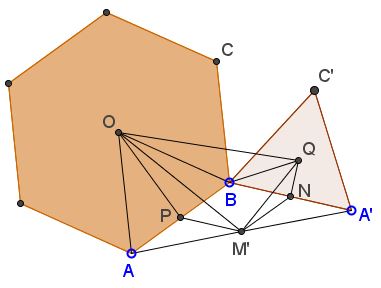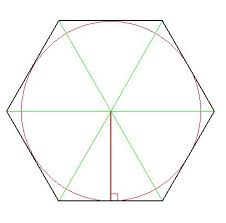
- CREATE REGULAR HEXAGON GSP5 HOW TO
- CREATE REGULAR HEXAGON GSP5 SOFTWARE
- CREATE REGULAR HEXAGON GSP5 FREE
CREATE REGULAR HEXAGON GSP5 HOW TO
Show how to select the two points, right click, and name them A and B, using the SET NAME command see image. Begin by using the CIRCLE BY CENTER AND POINT to draw a circle.Now Do the main construction for part 1: an equilateral triangle.Clear the screen (EDIT/SELECT ALL then DELETE OBJECTS).Now show them how these figures are not static, by moving them around a little see image.

Show students the OBJECTS menus and the objects toolbar (left side of screen).Ĭreate these objects: a line, a segment, a ray (called a half line), a triangle (by it's vertices), and a regular hexagon see image.Go to SETTINGS and show students how to hide the grid and axes.Begin by showing students how to start Kig on their computers.How part four ends is up to the individual teacher, although presentations from groups on each of the constructions is encouraged. Some students will reach this stage faster than others, but from here on out the lesson almost runs itself, as students "climb the ladder" of increasingly difficult challenges. Part four is where students are let loose on the list of construction challenges. Here students will learn a few more techniques that they can later apply to the list of construction challenges. In parts two and three, students work on a more complicated construction by following the instructions below. Most of the basic skills needed to use Kig have already been covered, now they need to practice. Students can watch this presentation and then immediately begin experimenting on their own to see if they can duplicate what they saw. In part one, the teacher shows the students how to make a basic construction in Kig. Students will be able to apply basic construction techniques to a much larger range of general geometric construction challenges.Students will be able to explain the various properties of each geometric construction.Students will be able to use Kig independently to construct basic geometric forms.Students will understand how smaller components can combine to create a complex whole.Students will explore the properties of geometric forms.Students will learn the basics of using Kig to construct geometric forms.At various times, have students demonstrate some of the easier tasks in front of the class.Shortly after doing so, however, it is recommended that students work in small groups or pairs, with each group having a computer. It is recommended that you begin by showing the class some of the basics of Kig-on a large screen, perhaps.Also encourage students to answer their own questions by experimentation.
CREATE REGULAR HEXAGON GSP5 SOFTWARE
Most of the most common questions students will have are those that can be figured out by simply playing around with the Kig software for a bit.

Any reference materials you feel are appropriate (mathematical dictionaries).Computer lab with the Kig software installed.Once students learn the basics of Kig, it will be relatively easy to have this lesson "run itself", as students work their way up the list of challenges. The activity could take several weeks to complete.At the same time, an exceptionally bright elementary student may be able to successfully tackle some of the upper level challenges. Although high school students can work through the basic constructions faster, there is still plenty of challenge at the upper level of the challenge list.

CREATE REGULAR HEXAGON GSP5 FREE
Kig is a free and open source alternative to commercial programs like Geometer's Sketchpad.


 0 kommentar(er)
0 kommentar(er)
